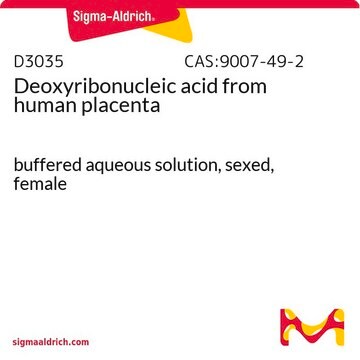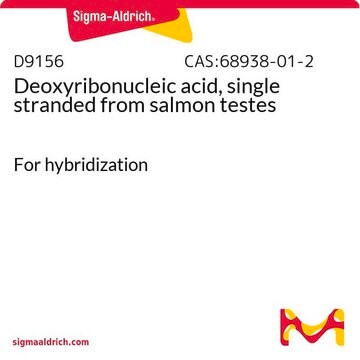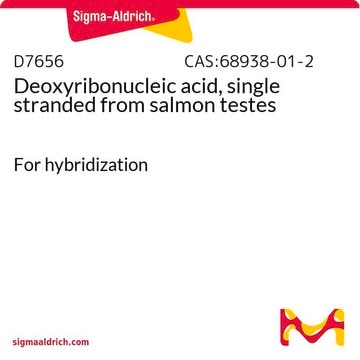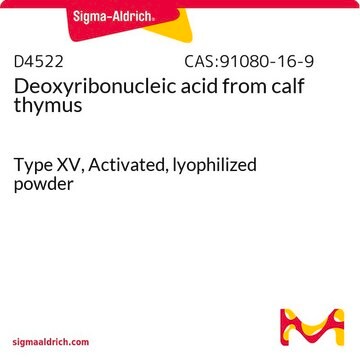D3287
Deoxyribonucleic acid, single stranded from human placenta
About This Item
Productos recomendados
grade
for molecular biology
description
For hybridization
form
solution
mol wt
(Fragments from 587-831 bp.)
solubility
water: 9-12 mg/mL
storage temp.
−20°C
InChI
1S/C15H31N3O13P2/c16-13-1-7(20)11(28-13)5-25-32(21,22)31-9-3-15(18)29-12(9)6-26-33(23,24)30-8-2-14(17)27-10(8)4-19/h7-15,19-20H,1-6,16-18H2,(H,21,22)(H,23,24)
InChI key
AWBASQCACWFTGD-UHFFFAOYSA-N
¿Está buscando productos similares? Visita Guía de comparación de productos
General description
Application
In order to decrease any non-specific hybridization of the probe to a substrate, blocking agents must be used. Generally, a combination of blocking reagent, detergent, and denatured, fragmented DNA is used to accomplish this. Sigma offers sonicated, denatured DNA from a variety of species for use as a blocking agent in Northern and Southern blotting and other nucleic acid hybridization techniques.
Features and Benefits
• DNA fragments of defined sizes.
Components
of 9-12 mg/ml DNA in 100mM phosphate buffer. However, it will reanneal on standing at room temperature so it is recommended to boil the solution for 10 minutes and then cool on ice for at least 5 minutes prior to use. Cooling on ice will
reduce the chances for reannealing, as it is more likely to reanneal if cooled at room temperature.
related product
Storage Class
11 - Combustible Solids
wgk_germany
WGK 3
flash_point_f
Not applicable
flash_point_c
Not applicable
ppe
Eyeshields, Gloves, type N95 (US)
Certificados de análisis (COA)
Busque Certificados de análisis (COA) introduciendo el número de lote del producto. Los números de lote se encuentran en la etiqueta del producto después de las palabras «Lot» o «Batch»
¿Ya tiene este producto?
Encuentre la documentación para los productos que ha comprado recientemente en la Biblioteca de documentos.
Los clientes también vieron
Nuestro equipo de científicos tiene experiencia en todas las áreas de investigación: Ciencias de la vida, Ciencia de los materiales, Síntesis química, Cromatografía, Analítica y muchas otras.
Póngase en contacto con el Servicio técnico








